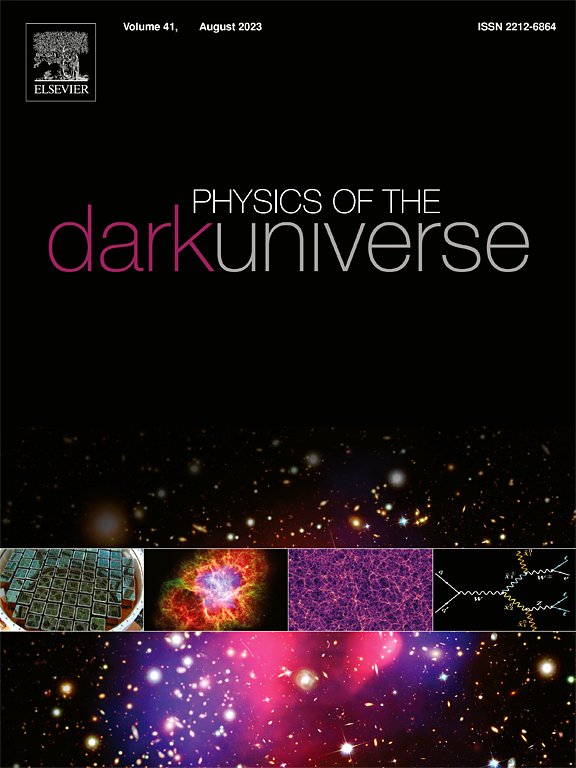Hints of noncold dark matter? Observational constraints on barotropic dark matter with a constant equation of state parameter
IF 6.4
2区 物理与天体物理
Q1 ASTRONOMY & ASTROPHYSICS
引用次数: 0
Abstract
This study investigates the potential of a cosmological model termed DM, in which a cosmological constant play the role of dark energy and dark matter is barotropic and has a constant equation of state parameter (), to address the tension between early- and late-universe observations. By incorporating the latest cosmological datasets — including Planck Cosmic Microwave Background (CMB), Baryon Acoustic Oscillation (BAO), Ia supernovae (SNe Ia), Redshift Space Distortions (RSD), and weak lensing (WL) — we constrain the DM compared to CDM. Our analysis reveals a marginal preference for a non-zero (at 95% confidence level) when combining CMB, SDSS BAO, SNe Ia, RSD, and WL data, and a marginal preference for a non-zero (at 95% confidence level) when combining CMB, DESI Y1 BAO, SNe Ia, RSD, and WL data. In addition, we find that, compared to CDM, DM can alleviate the tension from to . Furthermore, we find that, for CMB+SDSS+PP+RSD+WL datasets, the DM model is close to being positively preferred over the CDM model.
非冷暗物质的线索?具有恒定状态参数方程的正压暗物质观测约束
本研究探讨了一个名为ΛwDM的宇宙学模型的潜力,其中一个宇宙学常数扮演暗能量的角色,暗物质是正压性的,并且具有恒定的状态参数方程(wdm),以解决早期和晚期宇宙观测之间的S8张力。通过结合最新的宇宙学数据集-包括普朗克宇宙微波背景(CMB),重子声学振荡(BAO), Ia超新星(SNe Ia),红移空间扭曲(RSD)和弱透镜(WL) -我们将ΛwDM与ΛCDM进行了比较。我们的分析显示,当结合CMB、SDSS BAO、snia、RSD和WL数据时,非零wdm的边际偏好=2.7−1.9+2.0×10−7(95%置信水平),而当结合CMB、DESI Y1 BAO、snia、RSD和WL数据时,非零wdm的边际偏好=2.29−2.0+1.9×10−7(95%置信水平)。此外,我们发现,与ΛCDM相比,ΛwDM可以将S8张力从>;3σ缓解到<;1σ。此外,我们发现,对于CMB+SDSS+PP+RSD+WL数据集,ΛwDM模型比ΛCDM模型更接近于正优先。
本文章由计算机程序翻译,如有差异,请以英文原文为准。
求助全文
约1分钟内获得全文
求助全文
来源期刊

Physics of the Dark Universe
ASTRONOMY & ASTROPHYSICS-
CiteScore
9.60
自引率
7.30%
发文量
118
审稿时长
61 days
期刊介绍:
Physics of the Dark Universe is an innovative online-only journal that offers rapid publication of peer-reviewed, original research articles considered of high scientific impact.
The journal is focused on the understanding of Dark Matter, Dark Energy, Early Universe, gravitational waves and neutrinos, covering all theoretical, experimental and phenomenological aspects.
 求助内容:
求助内容: 应助结果提醒方式:
应助结果提醒方式:


